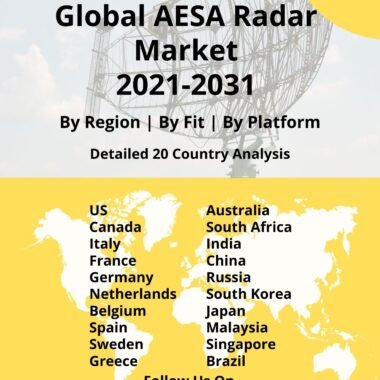Description
Underwater Loitering Reconnaissance System Market
An Underwater Loitering Reconnaissance System market is a type of autonomous underwater vehicle (AUV) designed to perform extended-duration missions in a specific area, often referred to as “loitering.” These systems are deployed in underwater environments to conduct reconnaissance, surveillance, data collection, and other tasks over an extended period. ULRS technology is employed in various applications, including naval operations, maritime security, environmental monitoring, and scientific research. ULRS units are designed to operate autonomously, performing predefined tasks without continuous human intervention. They can navigate, adjust their positions, and execute tasks based on pre-programmed instructions or real-time sensor inputs.
Unlike traditional AUVs, which are designed for point-to-point missions, ULRS units are optimized for extended deployments. They use efficient propulsion systems and energy management techniques to conserve power and maintain operation over days, weeks, or even months. The term “loitering” refers to the ability of ULRS units to remain stationary or navigate within a relatively confined area, enabling them to gather continuous data from a specific location of interest.
ULRS vehicles are equipped with various sensors, cameras, acoustic devices, and other payloads that allow them to collect data about the underwater environment, including water conditions, underwater structures, marine life, and potential threats. ULRS units can communicate with remote operators or command centers through acoustic communication systems or wireless networks, transmitting collected data and receiving updated mission instructions. Some ULRS systems are designed with adaptive capabilities, allowing them to respond to changes in environmental conditions or unexpected events, adjusting their behavior accordingly. ULRS technology is used for a range of applications, such as underwater surveillance for naval purposes, monitoring of underwater infrastructure (such as pipelines and cables), marine research to study marine ecosystems and behavior, and environmental monitoring for pollution detection. ULRS units can be launched from ships, submarines, or specialized underwater platforms. Recovery methods vary but often involve retrieval by surface vessels or submarines.
Major factors driving Underwater Loitering Reconnaissance System Market Growth
The Underwater Loitering Reconnaissance System (ULRS) market growth is influenced by a combination of technological advancements, strategic priorities, maritime security concerns, and operational requirements. These factors collectively shape the development, adoption, and growth of ULRS technologies and solutions. Advances in autonomous navigation, energy efficiency, sensor technology, communication systems, and artificial intelligence are driving the development of more capable and efficient ULRS platforms. The increasing sophistication of autonomous systems allows ULRS units to operate for extended periods without human intervention, conducting complex missions with a high degree of autonomy.
Trends Influencing the Underwater Loitering Reconnaissance System Market Size
The trend towards developing AUVs with extended operational endurance is driving the design and optimization of power systems, energy-efficient propulsion methods, and power management techniques for Underwater Loitering Reconnaissance System market size platforms. Advances in autonomous navigation algorithms and software are enabling ULRS units to conduct complex missions with minimal human intervention. This trend enhances their ability to navigate in challenging underwater environments and adapt to changing conditions. Some ULRS systems are being developed with swarm or cooperative behavior capabilities, allowing multiple units to collaborate on tasks, share information, and cover larger areas effectively.
Underwater Loitering Reconnaissance System Market Forecast & Dynamics
The ULRS market forecast includes a range of technologies such as autonomous underwater vehicles (AUVs), underwater drones, sensors, communication systems, and software for autonomous operations and data analysis. The market is influenced by factors such as defense budgets, technological advancements, maritime security concerns, and the demand for persistent underwater surveillance and reconnaissance capabilities. Beyond military and defense applications, ULRS technology may find use in various commercial sectors, such as underwater infrastructure inspection, marine research, and underwater archaeology.
Underwater Loitering Reconnaissance System Market Analysis for Recent Developments
The deployment of Global Underwater Loitering Reconnaissance Systems market analysis has become a game-changer in maritime surveillance and reconnaissance. These advanced underwater systems are designed for extended missions, combining autonomy, stealth, and persistent monitoring capabilities beneath the ocean’s surface. Global ULRS employs cutting-edge technology, including advanced sensors, artificial intelligence, and energy-efficient propulsion systems, allowing them to loiter in specific areas for extended periods. Their prolonged endurance and autonomous operation make them ideal for surveillance, intelligence gathering, and reconnaissance tasks.
Equipped with high-resolution imaging and data collection capabilities, Global Underwater Loitering Reconnaissance System market trends provides real-time information on underwater activities, marine biodiversity, and potential threats to maritime security. These systems are particularly valuable in monitoring strategic locations, such as shipping lanes, naval bases, and critical infrastructure. The introduction of Global Underwater Loitering Reconnaissance Systems market report signifies a shift toward more proactive and persistent surveillance in maritime domains. Their ability to operate covertly and gather valuable intelligence in real-time enhances naval situational awareness and strengthens the capabilities of nations in safeguarding their maritime interests. As technology continues to advance, these systems are likely to play an increasingly crucial role in maritime security and underwater reconnaissance.





